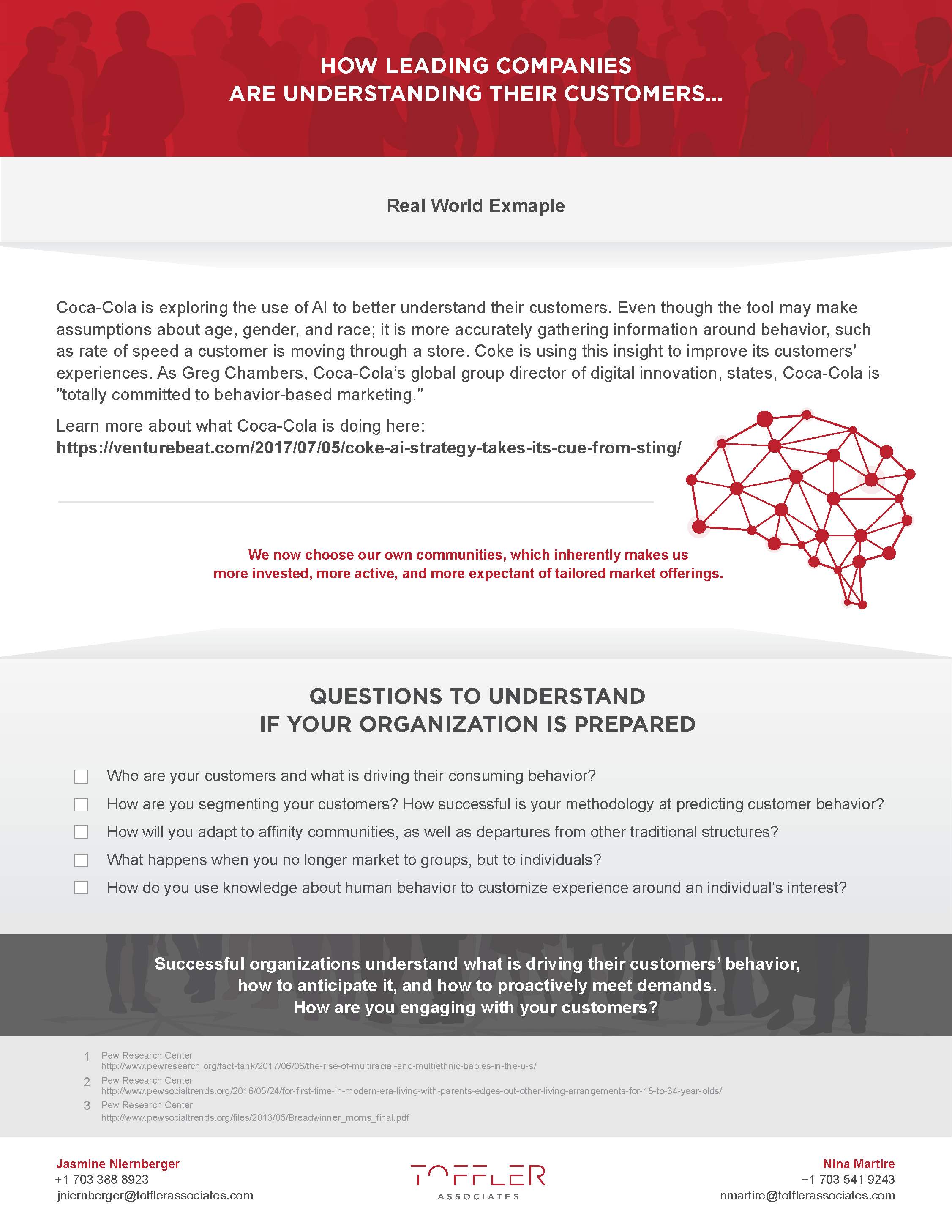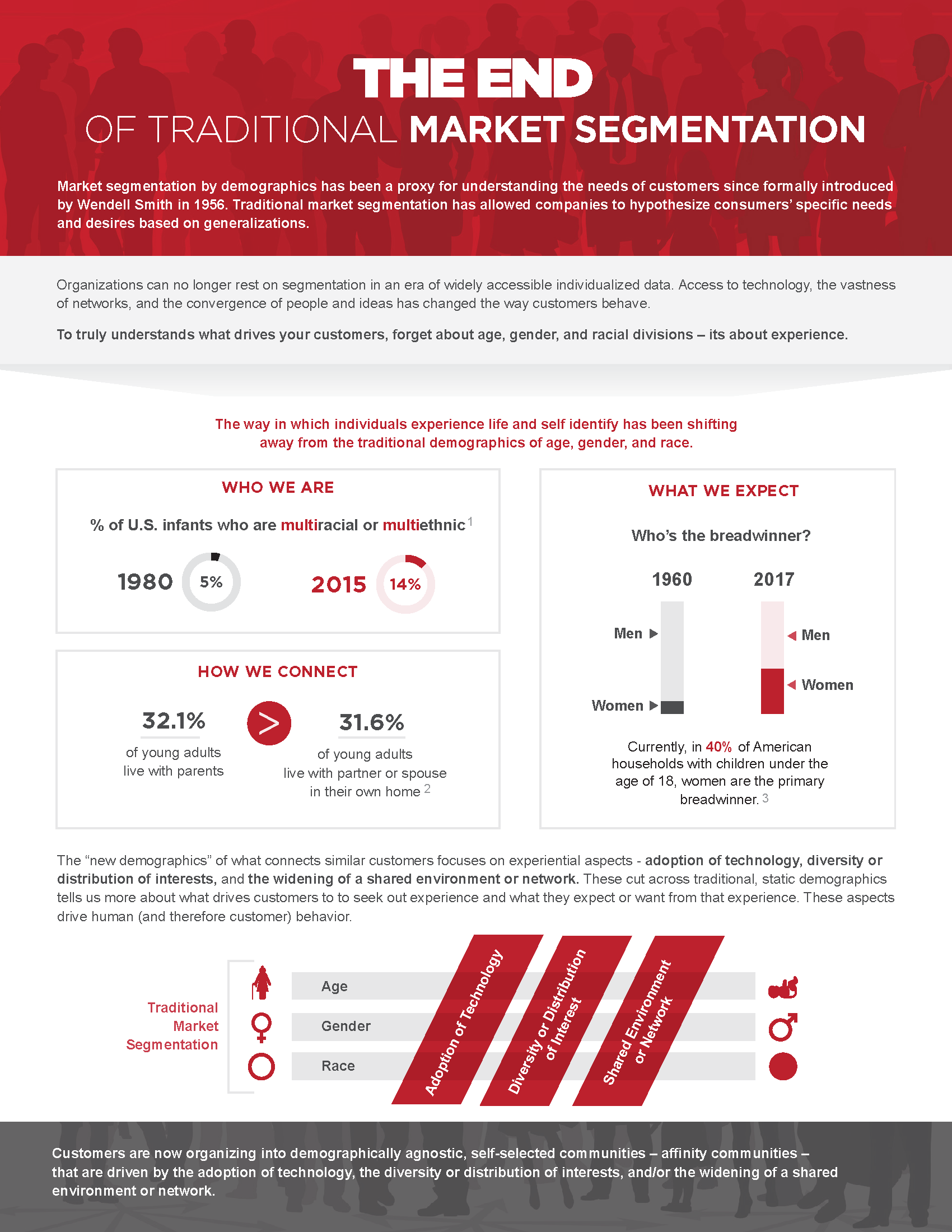Infographic: The End of Traditional Market Segmentation

Organizations can no longer rest on segmentation in an era of widely accessible individualized data. Access to technology, the vastness of networks, and the convergence of people and ideas has changed the way customers behave. To truly understands what drives your customers, forget about age, gender, and racial divisions – its about experience.

Nina Martire
Nina Martire is a Senior Associate who advises on strategy development, business planning and change management. She is focused particularly on the nexus of transformational change and strategic foresight, guiding leaders in commercial and government sectors to a better understanding of and an ability to plan for the future of their organizations. Nina holds an MBA from the McDonough School of Business at Georgetown University and has a deep background in corporate and commercial finance.
{{cta(‘befa9ff3-80a5-4a6c-b483-9daadb37b099’)}}
- Categories
- Futures and Foresight
- Strategic Planning



 About the Authors
About the Authors